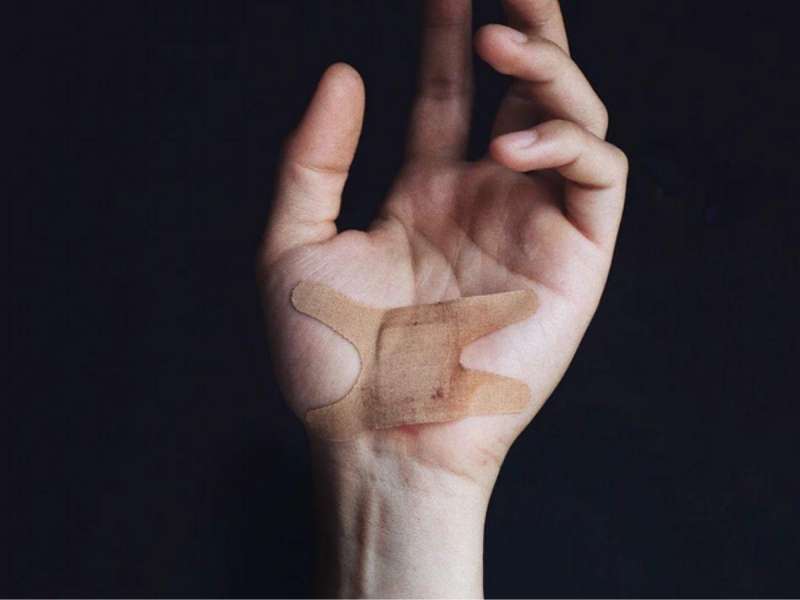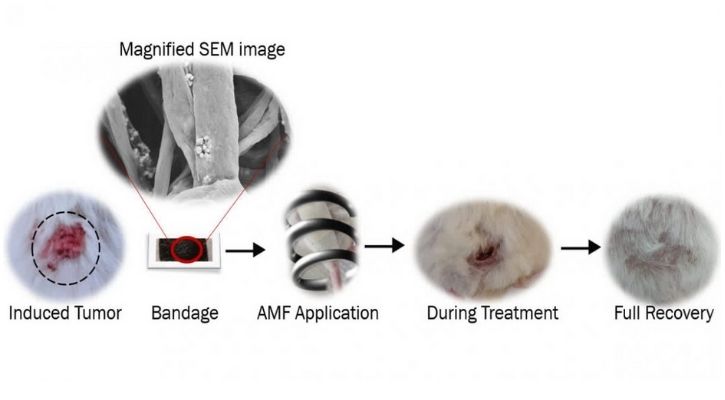Innovation: Indian Scientists Create A Bandage That Can Cure Skin Cancer

Researchers at the Indian Institute of Science have created a non-invasive method of treating skin cancer using a special bandage containing magnetic nanofibers. The alternative treatment of magnetic hyperthermia, where magnetic nanoparticles are used to heat tumours by means of external alternating current magnetic fields, is used. Usually, this procedure can be dangerous to deal with, since it can accumulate in the human body and cause toxicity if uniform heating is not achieved. To circumvent this, however, researchers from the Center for Science and Engineering in BioSystems as well as the IISc Department of Molecular Reproduction, Growth and Genetics have produced a bandage with a special blend of nanoparticles manufactured using a novel method called electrospinning.
The nanoparticles are made of iron oxide — Fe304 and polymer polycaprolactone (PCL), which is connected to the surgical tape. The heat that helps to cure the tumour is produced by the high frequency oscillating magnetic field. The researchers performed two experiments to test the effectiveness of this bandage — one was in vitro on human cancer cell lines, while the other was in vivo on mice with artificially induced skin cancer. Kaushik Suneet, a former BSSE project associate and the first author of the research, states, "It took a little more than two months to refine the protocol used to prepare the PCL-Fe3O4 fibrous mat-based bandage; however, it took quite some time to refine the in vitro and in vivo experiments that included the magnetic therapy testing."

It was able to treat skin cancer efficiently in both methods. In vivo research also showed that healthy tissue was intact without damage, burns or inflammation being suffered. When the study was performed, Shilpee Jain, a DST-INSPIRE Faculty Fellow at BSSE, and a senior author of the paper describes, "The elevated temperature at the treatment site allows heat to reach the tumour cells, splitting the tumour's compact random vasculatures (a network of blood vessels). (In comparison, due to their structured open vasculatures, normal healthy cells dissipate the tumour's compact random vasculatures (a network of blood vessels)." She added, "Further studies are needed before using it for pre-clinical and clinical applications to test the effectiveness of this novel treatment approach on a larger scale in rabbits, dogs and monkeys."
TAGGED :



